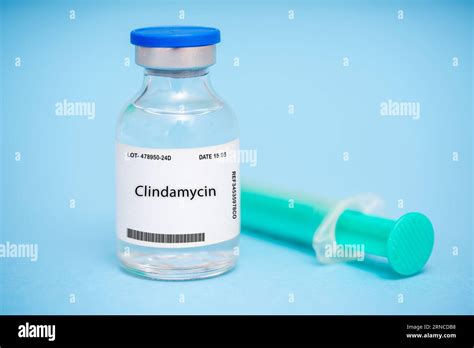The world of family planning and reproductive health has evolved significantly over the years, offering a plethora of options for individuals and couples to choose from. One such option, which has garnered attention for its effectiveness and simplicity, is vasectomy - a minimally invasive surgical procedure for male sterilization. This article aims to delve into the essence of vasectomy, exploring its benefits, the procedure itself, potential risks, and why it stands as an affordable solution today for many seeking a permanent form of birth control.
Understanding Vasectomy
At its core, a vasectomy is a procedure where the vas deferens, the tubes that carry sperm from the testicles to the penis, are cut or sealed. This interruption prevents sperm from mixing with semen, thereby rendering the individual infertile. The procedure is typically performed in a doctor’s office or clinic under local anesthesia, ensuring minimal discomfort for the patient. Its permanence and high effectiveness rate make it an attractive option for those who have completed their families or prefer not to have children.
The Procedure: A Detailed Overview
The vasectomy procedure can be broken down into several key steps:
Preparation: Before the procedure, patients are usually advised to avoid blood-thinning medications, shower and trim the Hair around the surgical site, and wear comfortable, loose-fitting clothing.
Administration of Anesthesia: Local anesthesia is administered to numb the area, ensuring the patient feels minimal to no pain during the procedure.
Incision: There are two main techniques - the conventional method involving a small incision and the no-scalpel vasectomy, where a special instrument is used to make a small puncture in the skin. The no-scalpel method is known for reducing the risk of complications and promoting faster healing.
Sealing the Vas Deferens: Once the vas deferens is accessed, it is cut, and the ends are sealed. This can be done through various methods, including clipping, tying, or cauterizing.
Closure: If an incision was made, it may be closed with stitches, although many times, the puncture sites are so small they heal on their own without needing sutures.
Benefits of Vasectomy
- Effectiveness: With a success rate of over 99%, it is one of the most reliable forms of birth control.
- Minimally Invasive: The procedure is relatively simple, with most men resuming normal activities within a few days.
- Permanent Solution: Ideal for those who are certain they do not want more children, eliminating the need for ongoing birth control methods.
- Low Risk: Serious complications are rare, making it a safe option for many.
Risks and Potential Complications
While vasectomy is considered safe, as with any surgical procedure, there are potential risks and complications:
- Pain: Some men may experience pain or discomfort after the procedure, which is usually managed with over-the-counter pain medication.
- Infection: As with any invasive procedure, there is a risk of infection, which can be mitigated with proper post-operative care.
- Fluid Build-Up: Swelling and fluid build-up (hematoma) can occur but are relatively rare and usually resolve on their own.
- Recanalization: Although extremely rare, there is a possibility that the vas deferens can reconnect, leading to unintended pregnancy.
Vasectomy as an Affordable Solution
The affordability of vasectomy can be evaluated from several perspectives:
- Cost-Effectiveness: Compared to the ongoing costs associated with other forms of birth control, such as hormonal pills or intrauterine devices (IUDs), vasectomy can be seen as a cost-effective option in the long run.
- Insurance Coverage: Many health insurance plans cover vasectomy, making it more accessible to a wider range of individuals.
- Simpllicity and Recovery: The procedure’s minimally invasive nature and quick recovery time reduce the overall cost and impact on one’s daily life, making it a practical choice for many.
Conclusion
In conclusion, vasectomy stands out as a viable, affordable, and effective solution for male sterilization. Its benefits, including permanence, simplicity, and high success rate, make it an attractive option for those seeking to end their fertility. While it’s crucial to consider the potential risks and ensure it aligns with one’s personal, financial, and family planning goals, vasectomy remains a significant advancement in reproductive health, offering individuals and couples a reliable means of family planning.
FAQ Section
How long does it take to recover from a vasectomy?
+Most men can resume their normal activities within a few days after the procedure. However, it's recommended to avoid heavy lifting, bending, or sexual activity for about a week to ensure proper healing.
Is vasectomy reversible?
+While vasectomy is considered a permanent form of birth control, it is technically reversible through a procedure known as vasovasostomy. However, the success of reversal depends on various factors, including the time elapsed since the vasectomy and the patient's overall health.
Does vasectomy affect sexual performance or libido?
+Vasectomy does not affect sexual performance, libido, or the ability to achieve an erection. Since sperm constitutes a very small part of the seminal fluid, the volume of ejaculate remains virtually unchanged, and orgasms feel the same.
By understanding the intricacies of vasectomy, its benefits, and its potential as an affordable solution for permanent birth control, individuals can make informed decisions that align with their reproductive health goals and financial considerations. As with any significant health decision, consulting with a healthcare provider is paramount to discussing all aspects of the procedure and ensuring it is the right choice for one’s specific situation.



